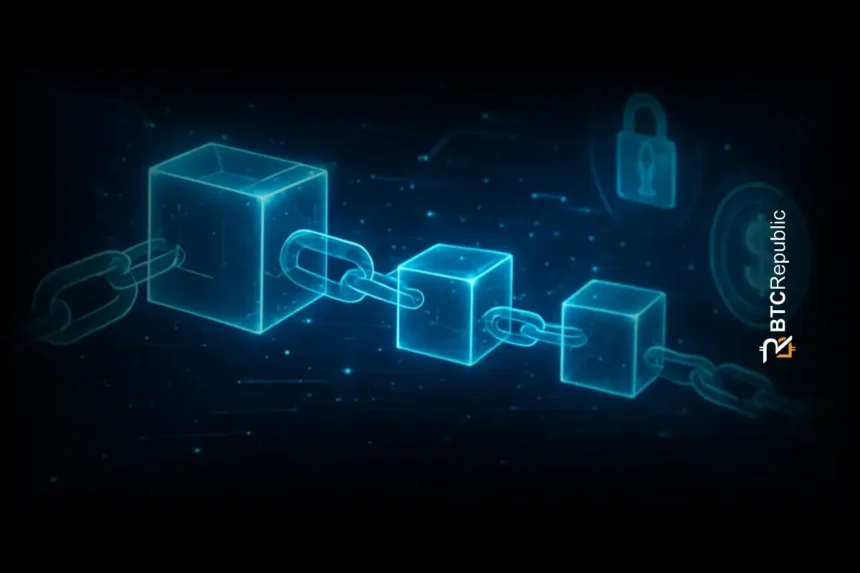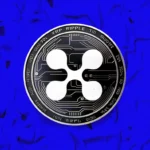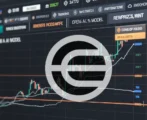Layer-3 (L3) networks represent the next evolution of blockchain scalability and connectivity, providing a shared layer for decentralized services and data that unifies the fragmented blockchain ecosystem.
Few people will argue that blockchain hasn’t been a success. It has emerged as the foundation of an entirely new and decentralized internet known as Web3, while underpinning cryptocurrency assets with a combined market capitalization of more than $3.trillion, transforming the way finance operates.
Yet for all of its success, blockchain could still be so much better. In fact, the history of blockchain is littered with challenges. As soon as Bitcoin started becoming popular, people realized that its decentralized network is unable to scale effectively, and these issues became even more acute with the launch of Ethereum and its smart contract-based decentralized applications.
Blockchain’s inability to scale means slow and expensive transactions, leading to fears of bottlenecks for decentralized finance, but the Web3 industry quickly stepped up with a solution. That was the Layer-2 networks, such as Abritrum, Cosmos and zkSync, which solved the issue by offloading transactions from the mainnet to a second network that runs in parallel, reducing fees and improving speeds.
L2 networks are undoubtedly one of the most innovative developments in blockchain’s history, but their enhanced scalability has led to the emergence of yet more troubles in the decentralized world, around coordination and governance.
L2s: Scaling Up Blockchain
One of the best known L2s is Aribitrum, which uses a technique known as “optimistic rollups” and bundles hundreds of transactions together into a single, much larger transaction that’s submitted onto Ethereum’s mainnet. By doing this, Arbitrum’s rolled up transactions can share one transaction fee, dramatically reducing the costs for dApps users, while processing them almost instantly. It’s utilized by a growing number of dApps, spanning DeFi, NFTs and blockchain games.
zkSync works similarly, but makes use of a different technique known as zero-knowledge rollups, where instead of bundling the actual transaction details, it simply posts a cryptographic proof of each one, before periodically submitting them to the mainnet. Doing it this way, it can confirm transactions are valid without revealing anything about the amounts sent or the users involved, offering increased privacy compared to optimistic rollups.
As an alternative, Cosmos provides a unique perspective on blockchain scalability. Cosmos itself is actually a Layer-1 network, but it uses the Inter-Blockchain Communication protocol to communicate with a network of application-specific L2 blockchains. While each of these Cosmos-based chains can be considered an L1 in its own right, they function similarly to L2s, with each one tailored for a specific application, resulting in much faster transaction speeds.
The Coordination and Governance Gaps
With each L2 network effectively operating as a separate ecosystem, their emergence has created a more fragmented Web3 ecosystem, leading to problems in blockchain coordination and a smorgasbord of different governance mechanisms that don’t always work so well.
One reason for this is that L2s seem so focused on improving performance that they’ve not really thought about how to address issues such as network interoperability. The interactions between L2s and the L1s they serve, not to mention other L2s, is extremely complex, based on highly technical bridging solutions that introduce complexity and security risks, and sometimes incur additional fees for users. dApp users thus suffer a disjointed experience when trying to communicate with apps or swap assets that live on different chains.
Governance presents its own challenges. The fact is, while the idea of community-based governance through “decentralized autonomous organizations” or DAOs has merit, it’s often poorly implemented. Most protocols use a token-weighted voting system, where the more tokens you hold, the more weight your vote carries, but this only centralizes power in the hands of so-called “whales”, who can dictate what changes are implemented and which are rejected.
The solution may well be found in the concept of a Layer-3 network, which goes above and beyond L2s by offering more intelligent coordination and robust models of governance. The most prominent L3 right now is Orbs, which is designed to sit above L2s, where it acts as a decentralized “service layer”, not only enhancing performance but also bringing increased functionality and interoperability. But how does it do this?
L3 To The Rescue
Orbs acts as a generalized computing layer that can interact with any L1 or L2 network, making interoperability between them a relatively seamless experience. dApps based on L1s and L2s can tap into Orbs’ infrastructure directly, where it acts as a kind of common substrate for decentralized services. What this means is that dApps can access advanced functions and data from multiple blockchains without the need for a dedicated network bridge.
When they tap into Orbs, dApps share a dedicated execution environment, which helps to simplify coordination between any L1 or L2 network. So a dApp built on Arbitrum can interact with a service running on Orbs that’s reliant on data from Cosmos or zkSync, creating an interconnected Web3 experience.
Orbs also offers a superior governance model that provides a framework for other protocols to follow. Rather than use an unbalanced token-weighted voting system that unfailry favors whales, Orbs’ governance relies on its network of validators, called Guardians, who vote on behalf of its community of users. Anyone who holds ORBS tokens can delegate them to one of the 17 Guardians for the purpose of governance, essentially lending them their votes, similar to how a Congressman or Senator votes on behalf of his or her constituents. All ORBS token holders have to do is learn about the different Guardians and their vision for the network’s future, and delegate their tokens to the one that appeals to their own interests.
Not only does Orbs solve two of blockchain’s biggest remaining handicaps, it also provides other benefits around dispute resolution, decentralized identities and off-chain data. Disputes can cause major headaches in a decentralized world, because there’s no all-powerful authority to establish the rules. Orbs gets around this with its decentralized, provably-neutral and verifiable dispute resolution mechanisms, where Guardians act as arbiters to resolve conflicts in a fair manner, increasing trust for users.
Orbs also facilitates the creation of decentralized identities or DIDs, which allow users to verify their age, identity and other private information without actually revealing who they are. While decentralized IDs are present on other blockchains, the superior interoperability of Orbs means its DIDs can be used across multiple networks.
Finally, Orbs provides a secure and trusted way for off-chain data to be brought on-chain, enabling advanced dApps such as prediction markets and insurance protocols. It relies on decentralized oracles that are incentivized to act truthfully and verify outside information, and in this way it connects the outside world to any dApps, regardless of which L1 or L2 network it lives on.
The Missing Piece Of The Puzzle
Layer-3 networks represent the next evolution of blockchain scalability and connectivity, providing a shared layer for decentralized services and data that unifies the fragmented blockchain ecosystem.
By solving outstanding issues such as coordination, governance, dispute resolution, privacy and off-chain data integration, Orbs provides the scaffolding the Web3 industry needs to develop more interconnected, collaborative and secure experiences.










